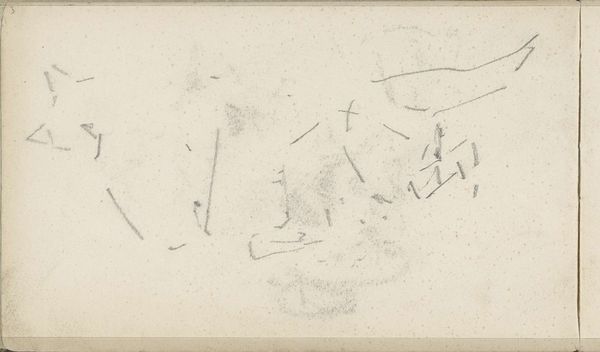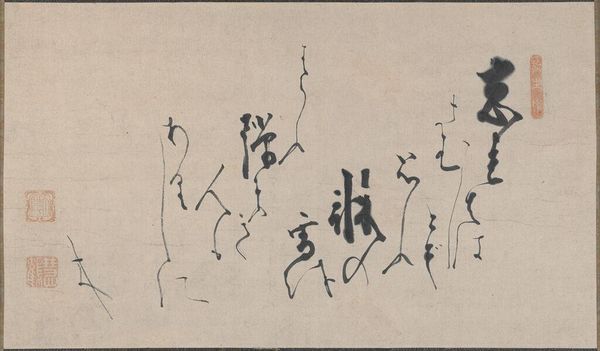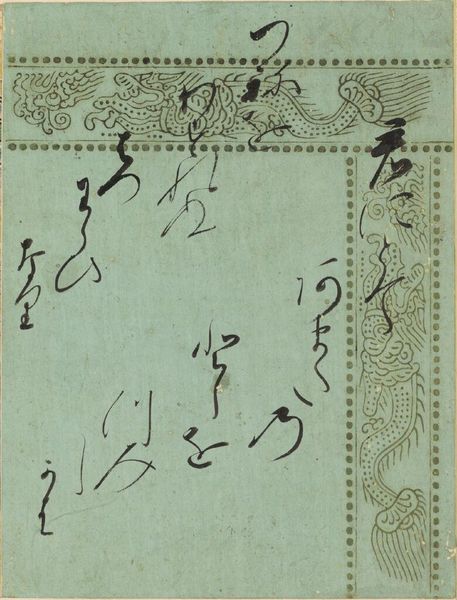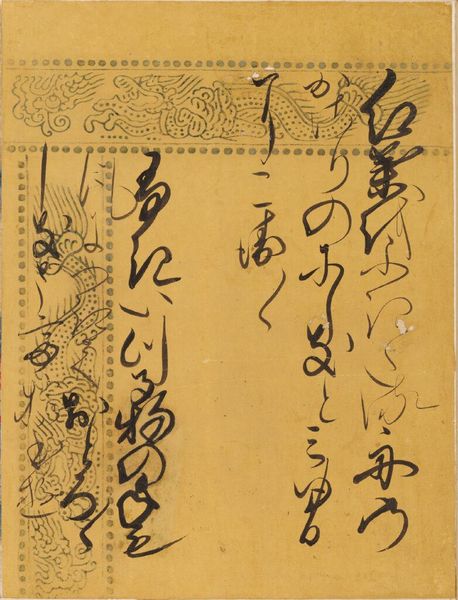
paper, ink-on-paper, hanging-scroll, ink
#
asian-art
#
japan
#
paper
#
ink-on-paper
#
hanging-scroll
#
ink
#
calligraphy
Dimensions: 51 7/8 × 9 3/4 in. (131.76 × 24.77 cm) (image)72 13/16 × 10 3/4 in. (184.94 × 27.31 cm) (without roller)
Copyright: Public Domain
Editor: Here we have Kameda Bōsai’s "Bat Flying Over the Moon," created around 1824 using ink on paper as a hanging scroll. I'm immediately struck by how the minimal brushstrokes create such a strong sense of movement, even though it's a still image. What stands out to you in this piece? Curator: Well, let’s look at this practically. It's ink, meticulously applied to paper. Paper, in this context, wasn't just a surface; it was a valued material, produced and consumed within a specific economic framework. Consider the labor involved: the cultivation of the plants, the processing, and finally, the creation of this support for artistic expression. Editor: That makes sense. So, the paper itself carries a certain weight of history and production? Curator: Precisely. And then there's the ink. What kind of ink? Where did the artist obtain it? How was it processed? These factors aren't merely aesthetic; they're indicative of resources, trade routes, and the artist’s relationship to the material world around them. And that ‘calligraphy’ style is only achieved by someone with considerable access to writing materials, time for practice, and thus a socio-economic position to be calligraphing verses at leisure, instead of farming or fishing or fulfilling their civic duties. The red seals function as more than decorative flourish or authentication, it’s a flex, signalling their prestige and level of artistry. Editor: It's easy to just see the image and miss all of those layers! What about the form? Does the hanging scroll format contribute anything? Curator: Absolutely! A hanging scroll dictates viewing conditions, who gets to see it and how it should be appreciated. It is not necessarily always accessible or a common, everyday item. It may have been exclusive to those of a certain socio-economic class with the ability to even own one. It's a whole system of cultural capital embedded in material production and dissemination. The scale is important; what impact do these dimensions have on viewership in different exhibition settings, and perhaps its mobility and consumption among collectors? Editor: Wow, I never would have considered the economic and social factors tied into the materials themselves. Thanks! Curator: It’s about digging beneath the surface and realizing art doesn't exist in a vacuum, instead it exists in relation to production and resources that came together to form the piece we observe.
Comments
No comments
Be the first to comment and join the conversation on the ultimate creative platform.













